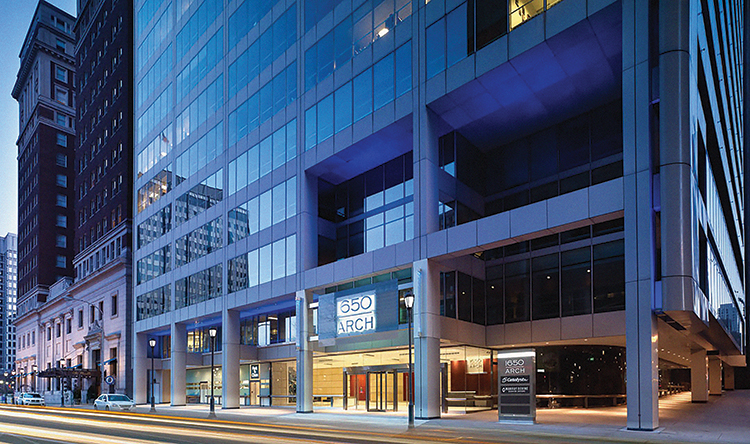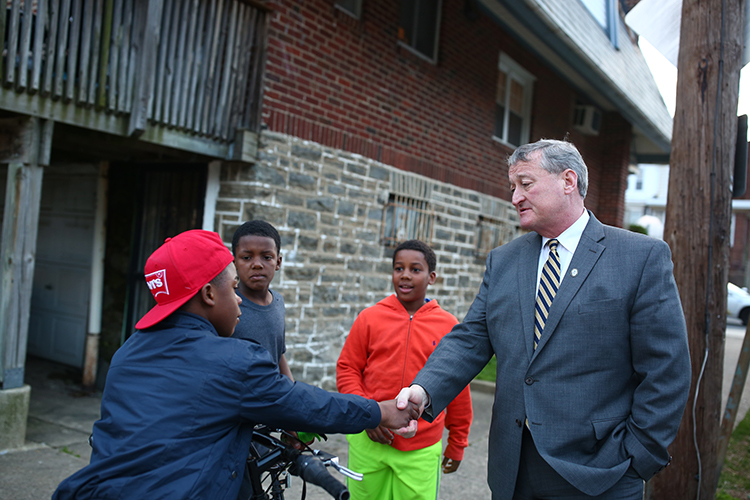Philadelphia joins other cities in fighting climate change through the 2030 Districts project.
By Danielle Corcione & Grid Staff
President Trump may have withdrawn the country from the Paris Climate Accord this past May, but major cities across the country are sticking to their climate adaptation and resilience plans, including Philadelphia. Mayor Kenney doubled down after Trump’s move, issuing a strong statement in opposition.
“President Trump’s decision to withdraw from the Paris climate agreement goes against the interests of Philadelphians,” he said, and then renewed the city’s commitment to reducing carbon emissions 80 percent by 2050, with an interim goal of hitting 26 to 28 percent by 2025.
Given that most of those emissions come from operating our buildings—all those houses and job sites and supermarkets that make up our neighborhoods—it shouldn’t come as a surprise that the Delaware Valley Green Building Council, a longtime advocate for more energy-efficient construction and building-operation practices, wants to help the city reach its goals.
DVGBC has signed on as the local lead in a national coalition of cities that are each working toward creating what they call 2030 Districts—coalitions of private building owners, service providers and other stakeholders who want to significantly decrease fossil fuel emissions by the year 2030. To qualify to be part of the project, buildings must reduce 50 percent of their energy, water and transportation use by 2030 in addition to meeting short-term reduction goals every five years.
“The Philadelphia 2030 District is a great tool to reach the [2030 reduction] goal because it focuses on deep reductions in energy and water use from the building sector,” explains Katie Bartolotta, policy and program manager of DVGBC. “It’s a great way to have a concrete and supportive community to think through [how] the city, in its own municipal buildings, can work toward making these reductions, [and to also] have a network of peer buildings throughout the city that are trying to do the same thing.”
Why 2030? Architecture 2030, a nonprofit founded in response to the climate change crisis, is ambitiously 20 years ahead of the United Nations. According to the latest Intergovernmental Panel on Climate Change Fifth Assembly report, fossil fuels must be phased out by 2050 to avoid detrimental damage to the planet.
Currently, there are five property partners, including the city of Philadelphia and Brandywine Realty Trust, committed to 2030. DVGBC will continue to reach out to building owners of all kinds, including large commercial buildings down to smaller, multifamily residential properties.
According to Bartolotta, our sister city of Pittsburgh is ahead of the pack on committed square footage. Other cities involved with 2030 Districts include Cleveland, Albuquerque, Austin, Burlington, San Francisco, Los Angeles, Toronto, Portland, Denver, Stamford, Seattle, Grand Rapids, San Antonio, Detroit, Ithaca and Dallas.
“Cities are the epicenter of climate change action, nationally and internationally,” Bartolotta emphasizes.
Although city governments are heavily involved with this initiative, private property owners and building managers in major cities will play the most crucial role in normalizing sustainable business practices. Scott Kelly, a DVGBC board member and a principal at high-peformance building consulting firm Re:Vision, says, “The private sector has really stepped up and engaged in a meaningful way. They’ve really demonstrated their leadership.”








